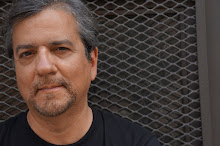Part One. Of Children & Idiots.
Damon Runyon wrote his short story "Madame La Gimp" at the inception of his career as a writer. It was published in October of 1929, in Hearst's Cosmopolitan, two weeks after the market crashed. The story is short, running just more than 6,000 words, but it's seminal - it has inspired two film adaptations ("Lady for a Day," in 1933 and "Pocketful of Miracles," in 1960; both directed by Capra) and at least one radio play of the same name as the short story, performed in 1948 as part of "The Damon Runyon Theater" with great radio voice actors like John Brown (Burns & Allen, "The Life of Riley"); William Conrad (who went on to narrate "The Fugitive" on television), Anne Whitfield and Frank Lovejoy.
Each of the three adaptations suffers from several problems, chief among them being the tendency of the actors to overplay the lines. Runyon writes in such a distinctive voice - always the present tense, never the conditional (i.e., the narrator in MLG, in reaction to a particularly far-fetched story, says "It is commencing to sound to me like a movie such as a guy is apt to see at a midnight show," not "It sounds like a movie that one might see at a midnight show"); and the narrator constantly straining at precision, using diction far more formal than the milieu warrants - that any attempt by an actor to embellish this by overplaying the language ends up rendering Runyon's characters as children or idiots, neither of which they were. In fact, while his work is full of humor, the world that Runyon's characters inhabit is actually quite dark, full of low-level hustlers who barely make their rent by selling bruised apples, flowers from an undertaker or yesterday's news (Apple Annie, in, various incarnations); or by hustling hicks from the sticks out of a fiver at a pool hall (Judge Henry G. Blake) or by suckering rubes out of their traveling money in games of faro on the Deuce (the Pale Face Kid). Just off of the page, alluded to but never dwelt on, the sons of old money are jumping to their deaths out of windows up and down Wall Street, while men and women of more modest expectations queue up on breadlines and sleep in the Hoovervilles that have sprouted, like mushrooms after a rain, in the Central Park and at the ends of various alleyways and corners of the metropolis.
With this adaptation, I intend to bring Runyon back to his roots. This will be a darker Runyon than audiences are familiar with from the Capra films, one in which - if I am successful and my actors are well-cast and well-directed - Runyon's characters (including the ubiquitous narrator) will be firmly rooted in the denizens of 1920's Broadway who were Runyon's actual pals (e.g., Otto "Abbadabba" Berman, Frank Costello) or people whom he rubbed shoulders with covering the "Main Stem" for the Journal-American (e.g. Heywood Broun and other members of the Algonquin Round Table, and a very young Archie Leach, before he metamorphosed into Cary Grant, stilt-walking adverts for a local haberdashery just off Times Square in between gigs with Prenders Acrobats). At the same time, however, Runyon's characters, like the creations of all great artists, are as much a product of that artist's particular sensibility (in this case, the yearnings of a young boy from Manhattan, Kansas for a life of adventure in the Big City) as they are of the personages he or she observed and, as such, transcend mere reportage. Therefore, I hope that this will also be a Runyon adaptation which will evoke that dream cityscape which is particular, interior and individual to everyone who has ever fallen under the spell of New York City, one which is visible just out the corner of one's vision, and one in which the worst fate that could befall oneself was to be banished forever from the Great White Way.
Saturday, December 12, 2009
Subscribe to:
Post Comments (Atom)

No comments:
Post a Comment